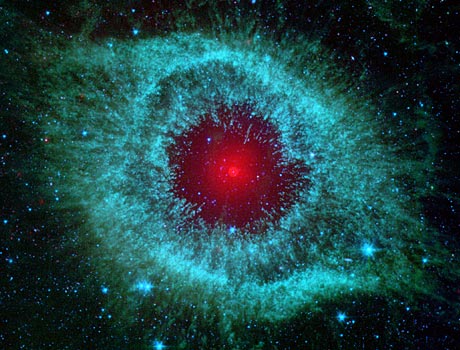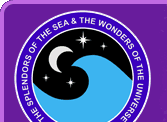
Image 7-5
Helix Nebula
This infrared image from NASA's Spitzer Space Telescope shows the Helix nebula, a cosmic starlet often photographed by amateur astronomers for its vivid colors and eerie resemblance to a giant eye. The nebula, located about 700 light-years away in the constellation Aquarius, belongs to a class of objects called planetary nebulae. Discovered in the 18th century, these nebulae were named for their resemblance in small telescopes to gas-giant planets. Planetary nebulae are actually the remains of stars that once looked a lot like our sun. When sun-like stars die, they puff out their outer gaseous layers.

Solar System | Faces of Mars | Visions of Jupiter | Sights of Saturn
Best of Hubble #1 | Best of Hubble #2 | Spitzer Spectacles | Above the Earth



